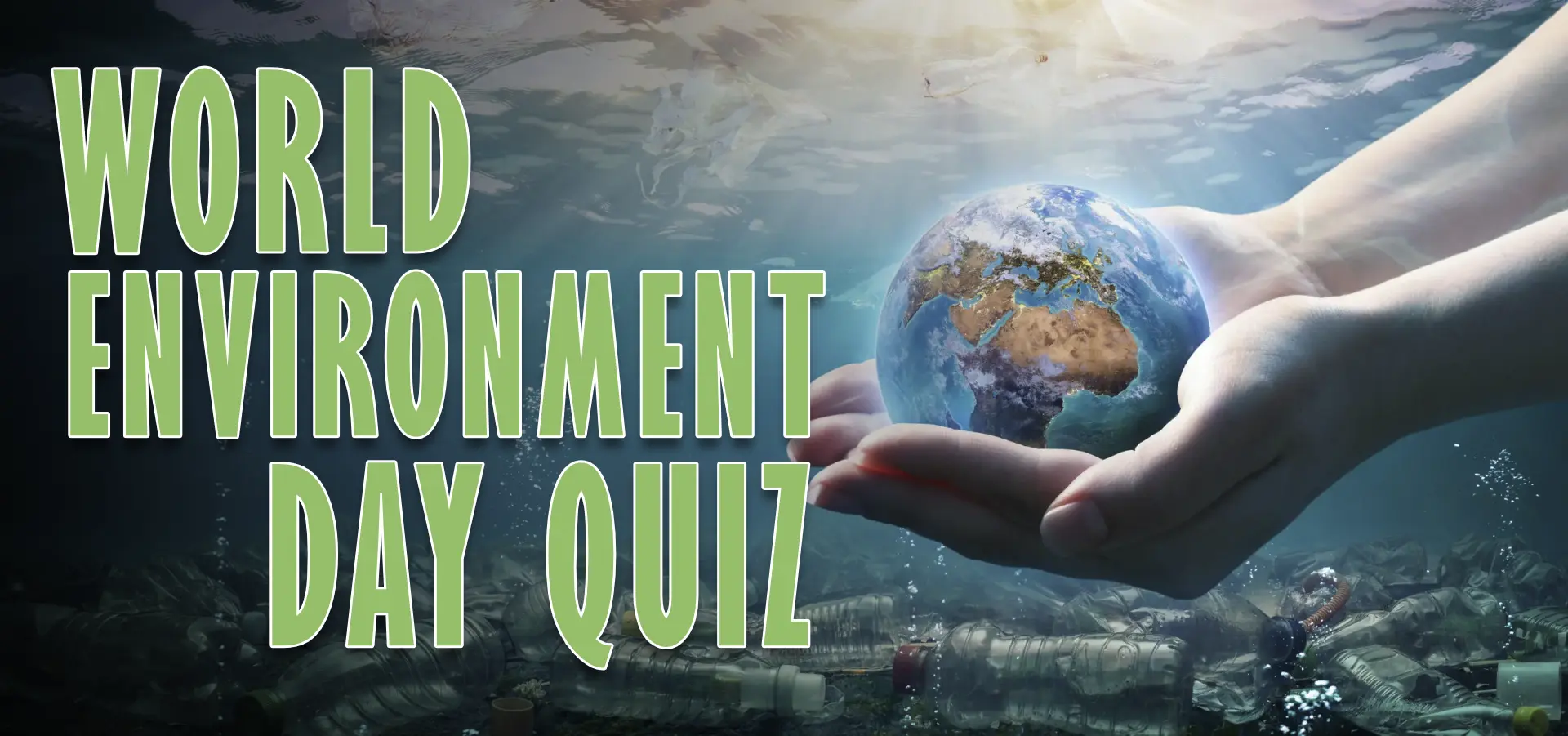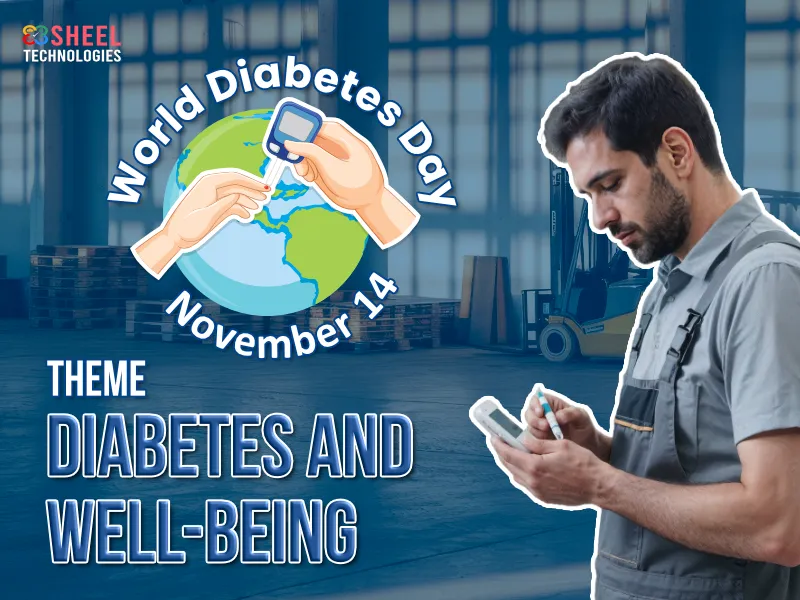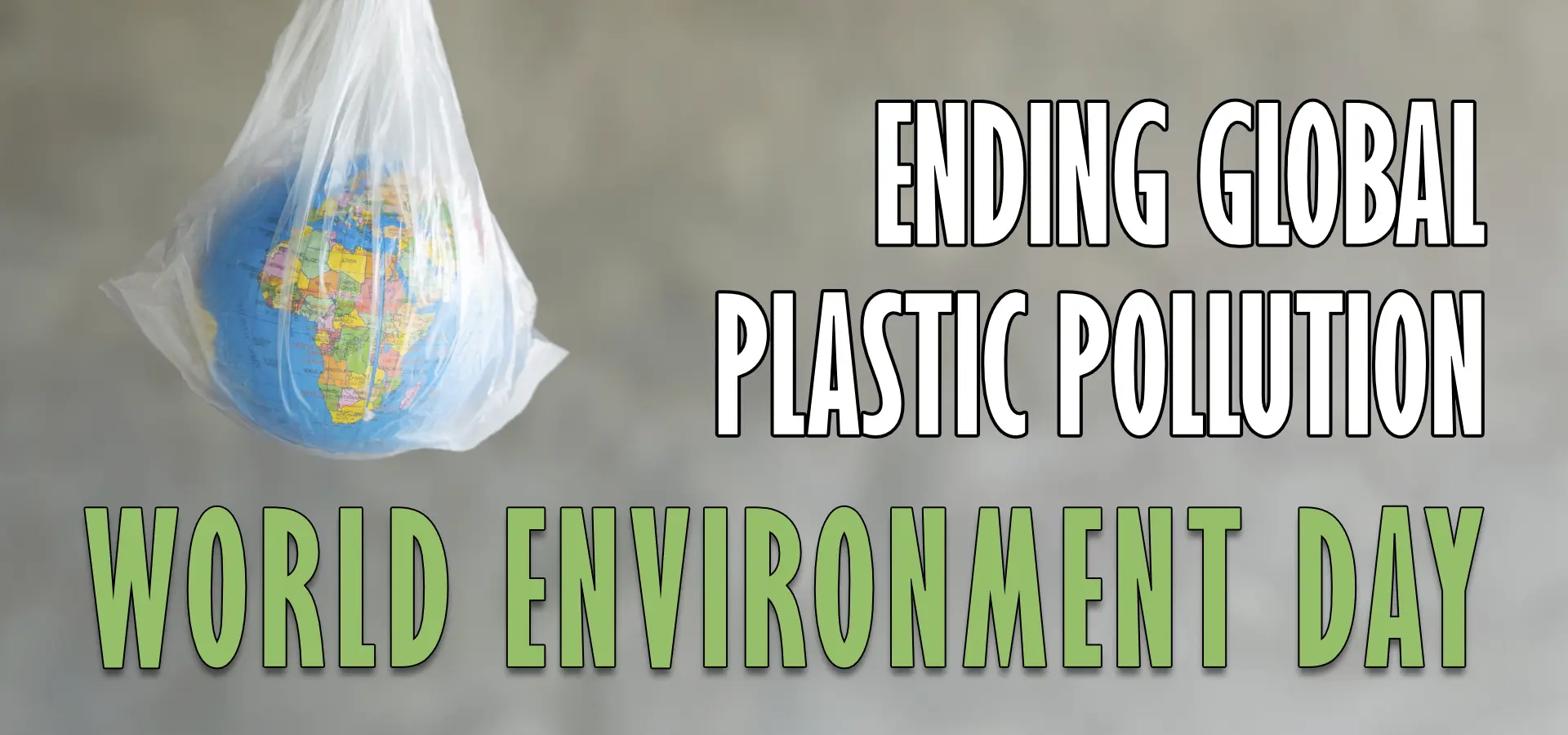
World Environment Day 2025 is more than just a date on the calendar. Celebrated every year on June 5th, it is a heartfelt call to all of us, individuals, communities and nations, to come together and protect the only home we have: our beautiful planet. It is a day to pause, reflect and renew our commitment to caring for the environment so future generations can enjoy the same natural wonders we cherish today.
Importance of World Environment Day 2025
The true importance of World Environment Day 2025 lies in its power to awaken our collective consciousness. It reminds us that every small action counts, from planting a tree to reducing waste to choosing sustainable options. When combined, these actions create a ripple effect of positive change. It is a day that inspires hope, unity and responsibility. Together, we can heal the earth, protect wildlife and create a cleaner, healthier environment where children can grow up breathing fresh air and drinking clean water.

Brief History and Global Participation in World Environment Day 2025
Since it began in 1972 at the United Nations Stockholm Conference, World Environment Day has grown into the world’s largest environmental movement, embraced by over 150 countries. Each year, people from all walks of life join hands across cities and continents to make a difference. The celebrations are filled with passion and purpose, including community clean-ups, tree planting drives and awareness campaigns that educate and empower. World Environment Day 2025 continues this inspiring tradition and shows that when we come together, our collective efforts can spark meaningful and lasting change.
Why Plastic Pollution is the Focus for World Environment Day 2025?
Plastic pollution is not just an environmental issue, it is a deeply emotional crisis that affects us all. The oceans, rivers and forests we cherish are being suffocated by plastic waste. Marine life struggles to survive amid plastic debris, waterways are clogged and landscapes are marred by trash that does not disappear.
For World Environment Day 2025, the theme “Ending Global Plastic Pollution” shines a powerful light on this urgent challenge. It calls on each of us, individuals, communities, industries and governments, to take responsibility, rethink our habits, reduce single-use plastics and push for better solutions to this growing crisis.
This year, the Republic of Korea proudly hosts the global celebrations, showcasing its commitment to sustainability and innovation in tackling plastic pollution. The Republic of Korea has been actively addressing plastic pollution through national policies, including reducing reliance on single-use plastics and investing in recycling infrastructure. Jeju Province itself has committed to becoming plastic-free by 2040.
Protecting our planet from plastic pollution means protecting our health, preserving wildlife and safeguarding the legacy we leave for future generations. Together, through awareness, action and innovation, we can turn the tide on plastic pollution.
World Environment Day 2025
What is Plastic Pollution?
Plastic pollution refers to the accumulation of plastic waste in our environment that negatively impacts wildlife, ecosystems and human life. From the deepest oceans to the highest mountains, plastic waste is now found everywhere. It clogs rivers, litters landscapes and harms animals that mistake it for food. As we approach World Environment Day 2025, it is important to understand the roots of this crisis and the many ways plastic affects our world.
Origins and Rise of Plastic Production
Plastic was first developed in the early 1900s as a revolutionary material that was lightweight, durable and inexpensive. Its use expanded rapidly after World War II. By the 1950s, plastic production exploded, providing solutions for packaging, construction, transportation, healthcare and more.
Today, global plastic production exceeds 400 million tonnes per year. Much of it is used for disposable items that are discarded within minutes, yet remain in the environment for hundreds of years. What once seemed like a miracle material has become one of the planet’s most pressing environmental threats.
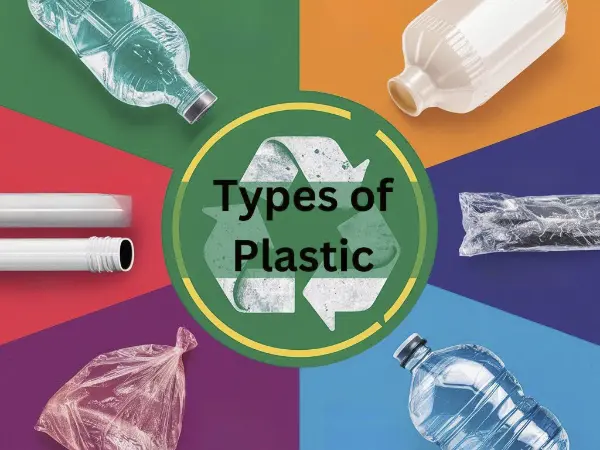
Types of Plastics
Single-Use Plastics: These are items used once and thrown away, such as plastic bags, straws, cutlery and packaging. They make up a significant portion of plastic waste found in oceans and landfills.
Microplastics: Tiny plastic particles less than 5 millimeters in size, microplastics come from broken-down larger plastics or are intentionally added to products like cosmetics and cleaning agents. They are invisible to the naked eye but present in water, soil and even the air.
Industrial Plastics: These include larger items like plastic bottles, containers and industrial materials. Over time, they break into smaller pieces, worsening the pollution problem.
Sources of Plastic Pollution
Consumer Waste: Items like bottles, wrappers and bags that are improperly discarded or not recycled end up in natural environments.
Industrial Waste: Factories release plastic pellets, packaging and scraps into waterways and soil, often without proper regulation.
Fishing Gear: Abandoned fishing nets, lines and traps, also known as ghost gear, float in the oceans, trapping marine life and damaging coral reefs.
Textiles and Clothing: Synthetic fabrics like polyester shed microplastics during washing, which then flow into rivers and oceans.
Why Plastic Persists in the Environment?
Plastic does not biodegrade in the way organic materials do. Instead, it breaks down into smaller fragments over time through exposure to sunlight, wind and water. These fragments, known as microplastics, can linger in the environment for hundreds or even thousands of years.
Because plastic is designed to be durable and resistant to natural degradation, it accumulates rather than disappears. Wildlife often mistake it for food and microplastics are now being found in human blood, lungs and food sources. The long-lasting nature of plastic pollution makes it especially dangerous and difficult to manage.
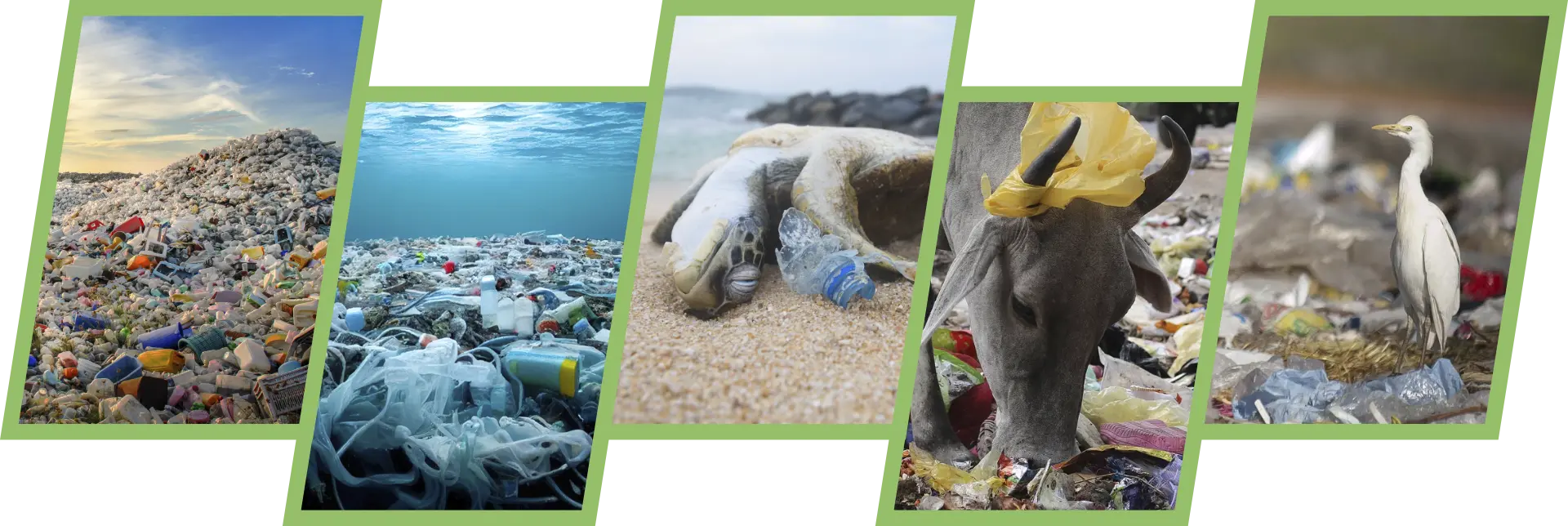
Impact of Plastic Pollution
Environmental Impact: Plastic pollution has reached every corner of the Earth. In our oceans, plastic waste kills marine animals who eat or get entangled in it. Coral reefs suffer, fish populations decline and shorelines become dumping grounds instead of peaceful habitats. The land is not spared either. Plastic waste clogs rivers, litters forests and destroys soil health, affecting agriculture and biodiversity.
Human Health Impact: Plastics are breaking down into invisible threats. Microplastics are now found in our food, our water and even in the air. They carry toxic chemicals like phthalates and BPA that can interfere with human hormones and lead to long-term health problems such as cancer, infertility and developmental issues.
Global Efforts to End Plastic Pollution
UNEP and the Global Plastics Treaty: The United Nations Environment Programme (UNEP) is leading a historic effort to create a legally binding Global Plastics Treaty. This treaty aims to address the full life cycle of plastics, from production to disposal. Negotiations involve over 175 countries and bring together governments, scientists, industries and civil society. The treaty is expected to set global targets for plastic reduction, promote sustainable alternatives and hold polluters accountable. It represents hope for a cleaner future, where plastic waste no longer threatens our oceans, our climate or our health.
Regional Policies and National Bans: Many countries are taking bold steps to combat plastic pollution. Rwanda and Kenya have set strong examples by banning plastic bags and enforcing strict penalties. The European Union has implemented sweeping regulations to phase out single-use plastics and invest in alternatives. In India, the ban on certain single-use plastic items took effect in 2022 and continues to evolve through policy and public action.
Innovations in Bioplastics, Recycling and the Circular Economy: Innovation is a powerful force in the fight against plastic pollution. Scientists and startups across the globe are developing biodegradable plastics made from seaweed, corn starch and even banana peels. These alternatives are compostable and pose far less harm to nature. In the recycling space, new technologies like chemical recycling and AI-driven sorting systems are making it easier to recover and reuse plastic materials. Circular economy models are gaining ground, encouraging companies to design products that last longer, are easier to repair and can be fully recycled. Brands are rethinking packaging. Refill stations, compostable wrappers and reusable containers are becoming part of mainstream business strategies. These innovations are reshaping the way we consume and dispose of plastic, offering new paths toward sustainability.
The Role of NGOs, Corporations and Communities: Around the world, non-governmental organizations (NGOs) are raising awareness, pressuring policymakers and mobilizing clean-up efforts. Groups like Break Free From Plastic and Plastic Pollution Coalition are uniting voices globally to demand system-wide change. Corporations are increasingly being held accountable. Many are signing plastic pacts, committing to reduce virgin plastic use and adopting eco-friendly packaging. Some companies are partnering with grassroots organizations to support waste workers and build circular supply chains. But real change also begins at the community level. From coastal clean-ups in the Philippines to zero-waste campaigns in Germany, people everywhere are stepping up. Schools, local governments and volunteers are leading efforts that transform awareness into action.
World Environment Day Posters
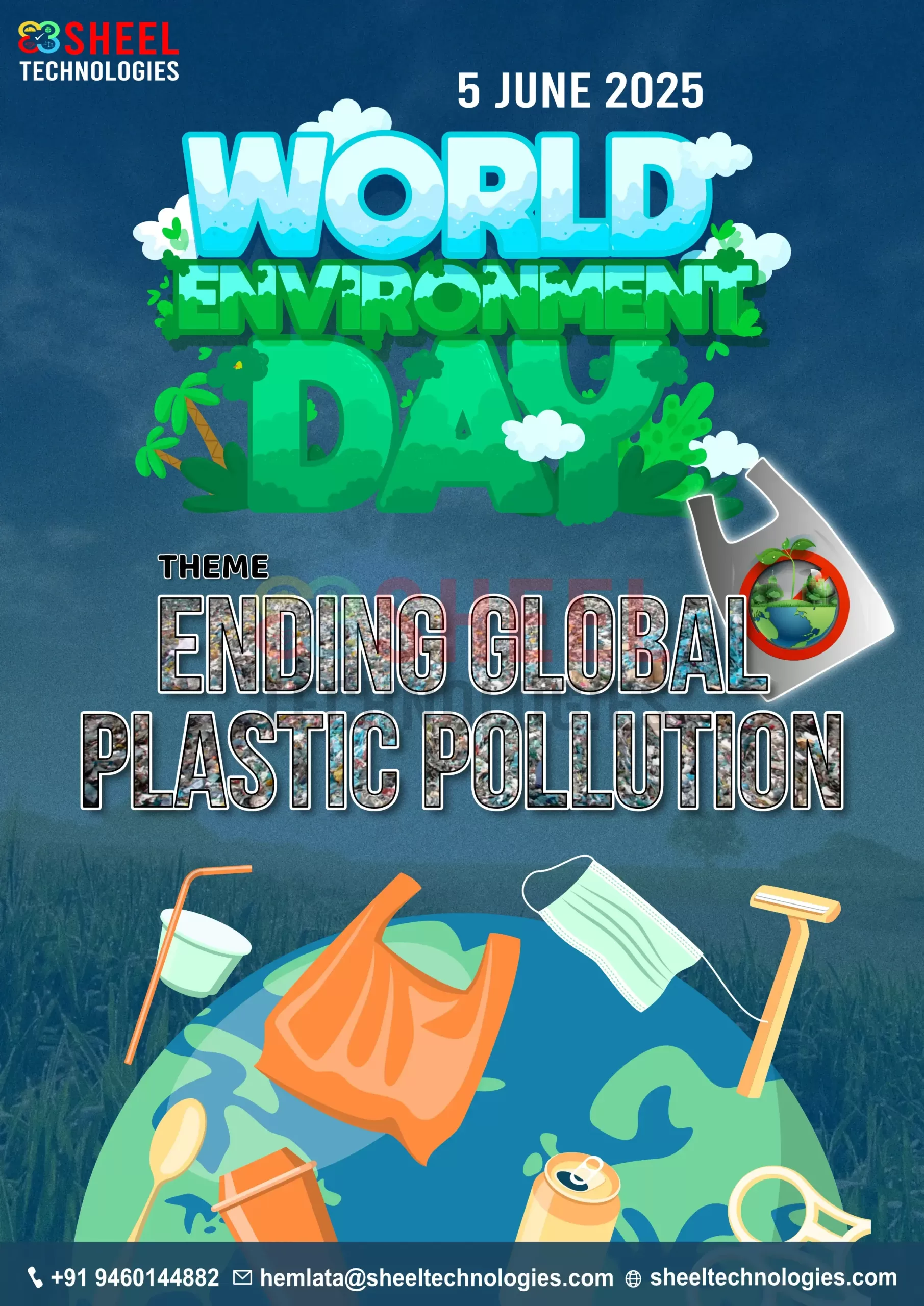
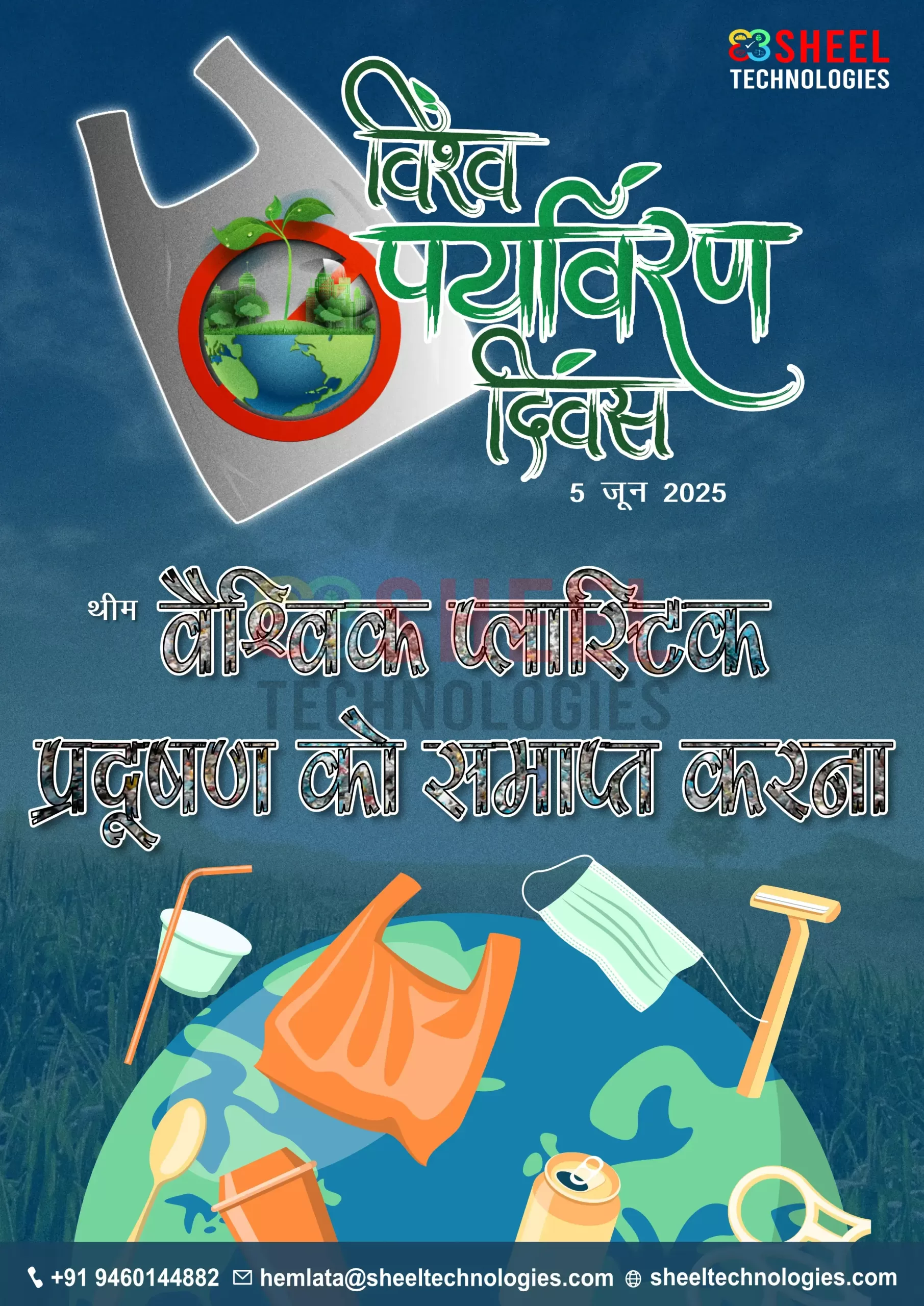
How Can You Help?
Every action we take can either add to the problem or become part of the solution. The good news is that each of us has the power to make a difference. Here are some practical and impactful ways you can contribute.
- Embrace Sustainable Lifestyle Changes
- Say no to single-use plastics. Bring your own cloth bags, reusable bottles and containers wherever you go.
- Choose products with minimal or eco-friendly packaging. Support brands that prioritize sustainability.
- Buy in bulk, reuse and recycle properly. Learn your local recycling guidelines and follow them carefully.
- Compost organic waste. Reducing food and packaging waste lowers the demand for plastic use.
- Get Involved in Local Clean-Ups and Campaigns
- Participate in beach, river and neighborhood clean-up drives.
- Volunteer with local NGOs or environmental clubs.
- Help organize awareness walks, poster competitions or eco-events in schools and societies.
- Support Innovation and Push for Policy Change
- Support businesses that use biodegradable packaging or run refill stations.
- Vote for leaders who prioritize climate action and plastic regulation.
- Sign petitions and write to policymakers urging for stronger plastic bans and producer responsibility laws.
- Educate and Inspire Others
- Share articles, videos and facts about plastic pollution on social media.
- Talk to your children about the importance of protecting nature.
- Host film screenings, quizzes or discussions around World Environment Day 2025.
Conclusion
The fight against plastic pollution is not limited to governments or global organizations. It belongs to all of us. Every individual, every community, every business has the power to create change. Whether it is refusing a plastic straw, joining a beach clean-up or supporting innovative solutions, your actions matter.
